Worldwide Terrorism & Crime Against Humanity Index
The 'Violent Killing Machine' of World War II; Japan
Nanking Massacre: A Forgotten Holocaust
On December 13, 1937, the Imperial Japanese Army stormed the Chinese city of Nanking. During the following six weeks, they murdered and tortured countless civilians whose only crime was being Chinese. Over 300,000 people were killed and over 20,000 women were brutally raped. However, over the decades, the Japanese began to deny that this massacre ever occurred. Few Americans are aware of the Nanking atrocities, so numerous efforts are now being made to teach the world what happened in China during the massacre.
There were many events leading up to the invasion of Nanking. During the Japanese conquests of World War II, they invaded China in 1931. They wreaked havoc wherever they went, murdering millions of Chinese people. First, Japan invaded Manchuria. As Japanese soldiers advanced west through China, they used germ warfare, spreading typhoid fever and the bubonic plague. During their occupation of China, the Japanese killed at least fifteen million Chinese soldiers and civilians.
During the nineteen-twenties, Nanking only had a population of 250,000.
However, during the nineteen-thirties, the city was highly populated with over one million residents. This increase was a result of the Japanese occupation and countless refugees fleeing to the city from Manchuria and other Chinese areas to the east of Nanking. They were safe in the city, until Japanese forces advanced towards Nanking from Shanghai on November 11, 1937.
Before the Japanese army attacked on foot, they made many bombings over Nanking. Most of these bombings were focused on the wealthier and more populated areas of the city. On September 25, 1937, the most devastating bombing occurred. There were over six hundred civilian casualties. Hospitals marked with a red cross on the roof were targeted, as well as refugee camps, power plants, water works, and radio stations. As a reaction to these bombings and advancing forces, political figures from The United States and The United Kingdom assembled an "International Committee." The committee set up "Safety Zones" inside the city, where refugees could stay.
On November 25, Japanese forces attacked Nanking from three different directions. The Chinese General Tang Sheng Zhi commanded an army of over a hundred thousand men. However, the Chinese city soon fell to the Japanese Imperial Army. As the Japanese entered the city, a massacre began that would continue for six weeks.
Source: http://www.gotrain.com/dan/nanking1.htm
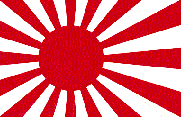
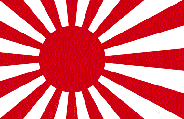
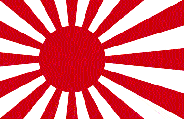
The Nanking Massacre, 1937
The Japanese occupation of Nanking, the capital of the Republic of China, lead to one of the greatest horrors of the century . This eyewitness report was filed by a New York Times reporter.
Aboard the U.S.S. Oahu at Shanghai, Dec. 17 [1937].
Through wholesale atrocities and vandalism at Nanking the Japanese Army has thrown away a rare opportunity to gain the respect and confidence of the Chinese inhabitants and of foreign opinion there....
The killing of civilians was widespread. Foreigners who traveled widely through the city Wednesday found civilian dead on every street. Some of the victims were aged men, women and children.
Policemen and firemen were special objects of attack. Many victims were bayoneted and some of the wounds were barbarously cruel.
Any person who ran because of fear or excitement was likely to be killed on the spot as was any one caught by roving patrols in streets or alleys after dark. Many slayings were witnessed by foreigners.
The Japanese looting amounted almost to plundering of the entire city. Nearly every building was entered by Japanese soldiers, often under the eyes of their officers, and the men took whatever they wanted. The Japanese soldiers often impressed Chinese to carry their loot....
The mass executions of war prisoners added to the horrors the Japanese brought to Nanking. After killing the Chinese soldiers who threw down their arms and surrendered, the Japanese combed the city for men in civilian garb who were suspected of being former soldiers.
In one building in the refugee zone 400 men were seized. They were marched off, tied in batches of fifty, between lines of riflemen and machine gunners, to the execution ground.
Just before boarding the ship for Shanghai the writer watched the execution of 200 men on the Bund [dike]. The killings took ten minutes. The men were lined against a wall and shot. Then a number of Japanese, armed with pistols, trod nonchalantly around the crumpled bodies, pumping bullets into any that were still kicking.
The army men performing the gruesome job had invited navy men from the warships anchored off the Bund to view the scene. A large group of military spectators apparently greatly enjoyed the spectacle.
When the first column of Japanese troops marched from the South Gate up Chungshan Road toward the city's Big Circle, small knots of Chinese civilians broke into scattering cheers, so great was their relief that the siege was over and so high were their hopes that the Japanese would restore peace and order. There are no cheers in Nanking now for the Japanese.
By despoiling the city and population the Japanese have driven deeper into the Chinese a repressed hatred that will smolder through tears as forms of the antiJapanism that Tokyo professes to be fighting to eradicate from China.
The capture of Nanking was the most overwhelming defeat suffered by the Chinese and one of the most tragic military debacles in the history of modern warfare. In attempting to defend Nanking the Chinese allowed themselves to be surrounded and then systematically slaughtered....
The flight of the many Chinese soldiers was possible by only a few exits. Instead of sticking by their men to hold the invaders at bay with a few strategically placed units while the others withdrew, many army leaders deserted, causing panic among the rank and file.
Those who failed to escape through the gate leading to Hsiakwan and from there across the Yangtze were caught and executed....
When theJapanese captured Hsiakwan gate they cut off all exit from the city while at least a third of the Chinese Army still was within the walls.
Because of the disorganization of the Chinese a number of units continued fighting Tuesday noon, many of these not realizing the Japanese had surrounded them and that their cause was hopeless. Japanese tank patrols systematically eliminated these.
Tuesday morning, while attempting to motor to Hsiakwan, I encountered a desperate group of about twentyfive Chinese soldiers who were still holding the Ningpo Guild Building on Chungahan Road. They later surrendered.
Thousands of prisoners were executed by the Japanese. Most of the Chinese soldiers who had been interned in the safety zone were shot in masses. The city was combed in a systematic housetohouse search for men having knapsack marks on their shoulders or other signs of having been soldiers. They were herded together and executed.
Many were killed where they were found, including men innocent of any army connection and many wounded soldiers and civilians. I witnessed three mass executions of prisoners within a few hours Wednesday. In one slaughter a tank gun was turned on a group of more than 100 soldiers at a bomb shelter near the Ministry of Communications.
A favorite method of execution was to herd groups of a dozen men at entrances of dugout and to shoot them so the bodies toppled inside. Dirt then was shoveled in and the men buried.
Since the beginning of the Japanese assault on Nanking the city presented a frightful appearance. The Chinese facilities for the care of army wounded were tragically inadequate, so as early as a week ago injured men were seen often on the streets, some hobbling, others crawling along seeking treatment.
Civilian casualties also were heavy, amounting to thousands. The only hospital open was the American managed University Hospital and its facilities were inadequate for even a fraction of those hurt.
Nanking's streets were littered with dead. Sometimes bodies had to be moved before automobiles could pass.
The capture of Hsiakwan Gate by the Japanese was accompanied by the mass killing of the defenders, who were piled up among the sandbags, forming a mound six feet high. Late Wednesday the Japanese had not removed the dead, and two days of heavy military traffic had been passing through, grinding over the remains of men, dogs and horses.
The Japanese appear to want the horrors to remain as long as possible, to impress on the Chinese the terrible results of resisting Japan.
Chungahan Road was a long avenue of filth and discarded uniforms, rifles, pistols, machine guns, fieldpieces, knives and knapsacks. In some places the Japanese had to hitch tanks to debris to clear the road.
Sources: Modern History Sourcebook, From F. Tillman, "All Captives Slain,'' The New York Times, December 18, 1937, pp. 1, 10.
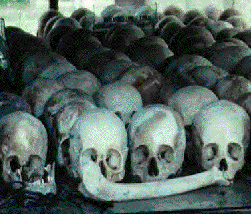
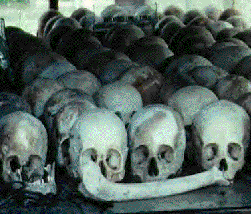
The Japanese Genocide Units:
Unit 731, Unit 100, Unit 516
Angry at the Japanese atrocities in Nanjing during WWII, German diplomat George Rosen sent Magee's film to Nazi government and requested film be shown to Hitler and claimed Japanese army was a "Violent Killing Machine". Following is summary of information from various sources.
Like Oskar Schindler, the German industrialist who protected Jews, Mr. John Rabe and few other western foreigners risked their life and helped to save 250,000 Chinese refugees from being killed. Chinese called him "The living Budda of Nanking". As the leader of local Nazi Party and Safety Zone Chairman in Nanjing, Mr. Rabe also wrote a letter to Hitler about the Japanese War Crimes and asked Hitler to persuade Japan to stop the atrocities. Ursula Reinhardt, his granddaughter from Berlin, showed the 8 volumes of diary of war the very first time to the public in New York on December 12, 1996. The English version of his complete diaries is finally available The Good Man of Nanking - The Diaries of John Rabe
Minnie Vautrin, was an American missionary from a little town of Michigan. In unswerving defiance of the Japanese, she turned Ginling College in Nanking into a sanctuary for 10,000 women and girl, who honored her as their "Goddess of Mercy", a "Living Goddess". The book is based on her diary, maintained during the entire siege, correspondences, eyewitness, government documents, and interviews with Vautrin's family.
American Goddess at the Rape of Nanking:
The Courage of Minnie Vautrin ISBN 0-8093-2303-6
A must read new book in its 7th print in just 1 month The Rape of Nanking - The Forgotten Holocaust of WWII (BasicBooks, Dec. 1997 ISBN 0-465-06835-9) By Iris Chang who extensively researched documents in the US, Germany, China and Japan, diaries from Japanese soldiers, first-hand interviews with eye-witnesses and survivors. It remained on the New York Times Bestseller List for 13 weeks and also hit the bestseller lists in the Washington Post, Wall Street Journal, Los Angeles Times, USA Today and San Francisco Chronicle
Another must-read book "Rape of Nanking: An Undeniable History in Photographs" (Triumph Books) by Shi Young and James Yin with many photos taken by Japanese soldiers themselves as souvenir pictures that were copied and hidden by a Chinese employee of the photo shop. To thumb through the book is an almost unbearable experience.
The Nanjing Massacre: A Japanese Journalist Confronts Japan's National Shame by Honda Katsuichi. ISBN 0-7656-0335-7.